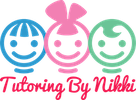
What is expected of your child – Year by Year
Key Stage 2
Year 3 - Starting Year 3 also means entering a new Key Stage.
In Year 3 Maths your child will start adding and subtracting with three-digit numbers, using column addition and subtraction. They will learn their 3, 4 and 8 times tables. This will then help them in moving onto multiplying a two-digit number by a one-digit number.
Children will learn how to find fractions of quantities and also about equivalent fractions. They will learn about perimeter and also how to tell the time on a 12-hour and 24-hour clock. They will start to learn about right angles plus horizontal, vertical, perpendicular and parallel lines. Children will need to interpret and present data using bar charts, pictograms and tables. In English children will be increasing their familiarity with a wide range of genres of writing. They will be preparing poems and play scripts to read aloud and perform. They will be thinking about inference and making predictions about what is going to happen in a story. This year they will need to build on their handwriting work in Year 2, becoming more confident with joining letters. They will be thinking carefully about the setting, characters and plot in their stories and how to structure a text, remembering to use plenty of good description. They will need to use conjunctions such as when, before, after, while, so and because. This year, they will start to use speech marks when writing dialogue.
Year 4
In Year 4 Maths, your child will be learning to add and subtract numbers with up to four digits using column addition and subtraction. They will continue to learn their times tables, so that by the end of the year they are confident in all of them up to the 12 times table. This will then help them in moving onto multiplying three-digit numbers by a one-digit number.
Year 4 children will solve problems involving fractions and be introduced to decimals. They will need to find the perimeter and area of shapes, convert between units of measurement and convert between the 12-hour and 24-hour clock. Children will do further work on angles and co-ordinates. They will also need to interpret and present data in bar charts and line graphs.
In English Children will be increasing their familiarity with a wide range of genres of writing. They will be preparing poems and play scripts to read aloud and perform. They will be thinking about inference and making predictions about what is going to happen in a story.
When it comes to writing, they should become much more confident this year with joining their handwriting and keeping it as neat and legible as possible. They will be thinking carefully about the setting, characters and plot in their stories and how to structure a text, including use of paragraphs. They will be using apostrophes to mark plural possession. They should also become more confident in including dialogue in their stories, including the correct use of speech marks.
Year 5
In Maths, Children in Year 5 will be expected to be confident enough with addition, subtraction, multiplication and division to know which one to use in what situation. They need to be confident in their methods for using all four operations with larger numbers (three digits and then four digits). They should also be able to see how maths fits into everyday life, and other areas of study. Children will be learning about fractions, decimals and percentages. They will need to calculate the area and perimeter of different shapes. Children will need to solve measurement problems that involve converting between units of measurement. They will learn to draw and measure angles and also calculate the size of missing angles. They will need to interpret information in line graphs and tables.
English in Year 5, children will read a range of different genres. They will continue to use their skills of inference of characters' motives and feelings and will start to think about figurative language and how it is used. They will learn to spell a variety of more sophisticated words with different prefixes and suffixes.
When writing a text, they will carefully select vocabulary (including adverbs) and use a variety of presentational devices to structure text (including time connectives). They will use a range of punctuation correctly, including brackets, dashes and commas
Year 6
Year 6 means the next round of SATs exams! Start revising by knowing what the learning targets are for the new year, reviewing what was taught in Years 3, 4 and 5, and giving your child lots of practice at SAT papers.
In Maths Year 6 children will learn about square, prime and negative numbers. They will be multiplying and dividing with numbers up to four digits, using formal, efficient methods. They will be doing more complicated work with fractions, decimals and percentages. Children will also start to learn about ratio and proportion and will be introduced to algebra. They will need to measure the perimeter, area and volume of different shapes, plus convert between units of measurement. Coordinates in all four quadrants are introduced in Year 6, as is the interpretation and construction of pie charts.
English in Year 6, children will read a range of different genres. They will enhance their inference of characters' motives and feelings and be able to discuss and evaluate how authors use figurative language. They will learn to spell a variety of more sophisticated words with different prefixes and suffixes. They will also think about how words are related by learning about synonyms and antonyms. When writing a text, they will carefully select vocabulary and use a variety of presentational devices (including adverbials) to structure text. They will use a range of punctuation correctly, including semi-colons, colons, dashes and hyphens.
